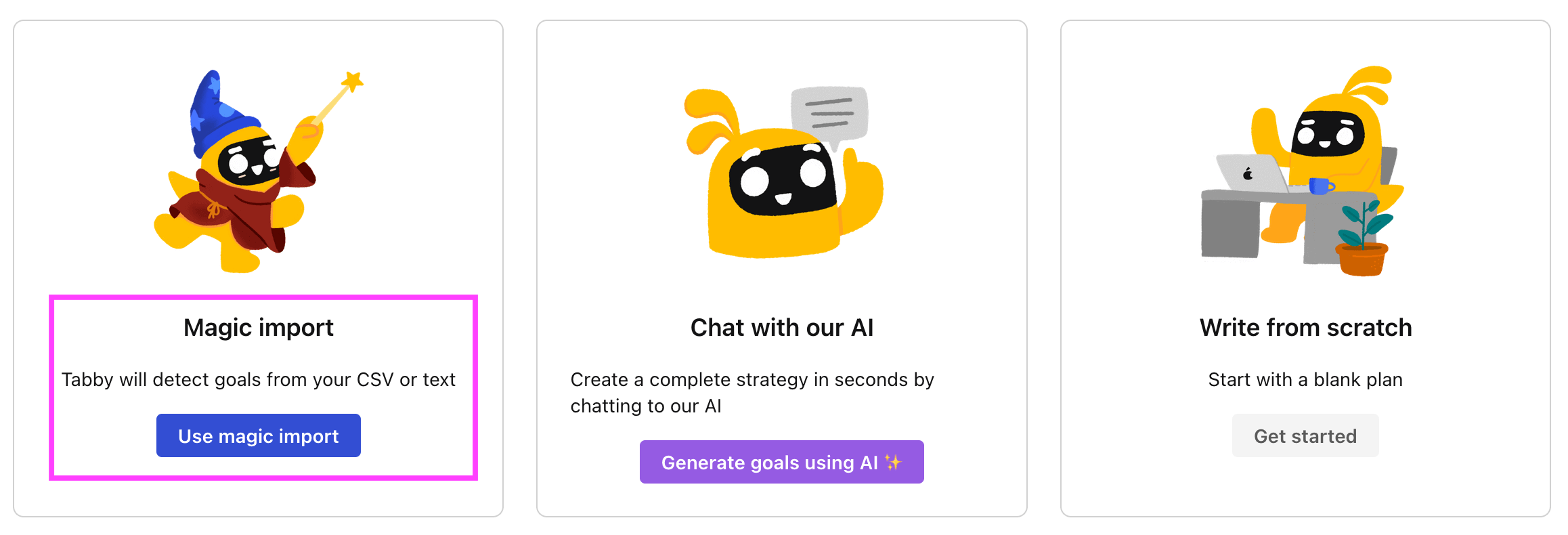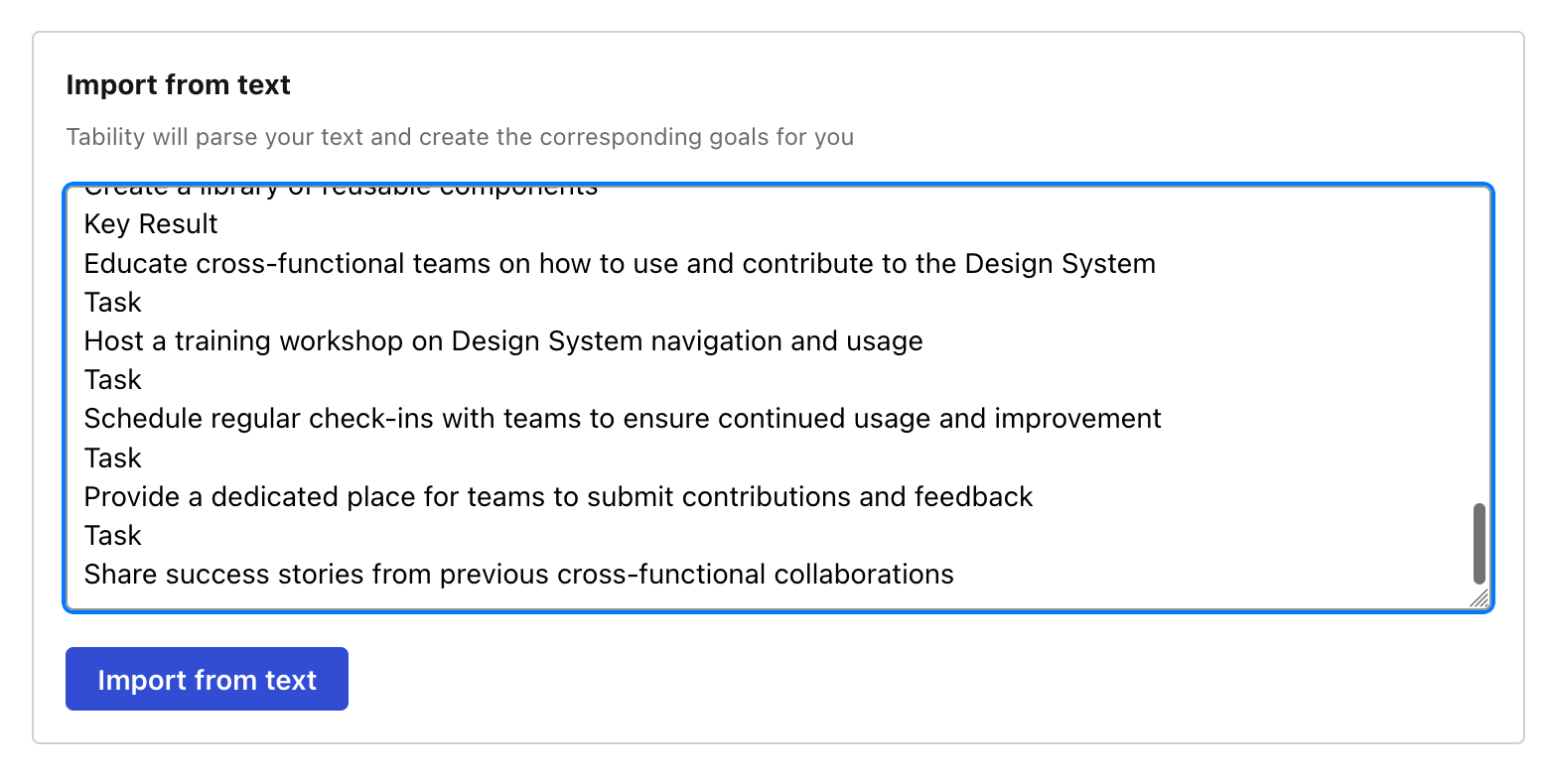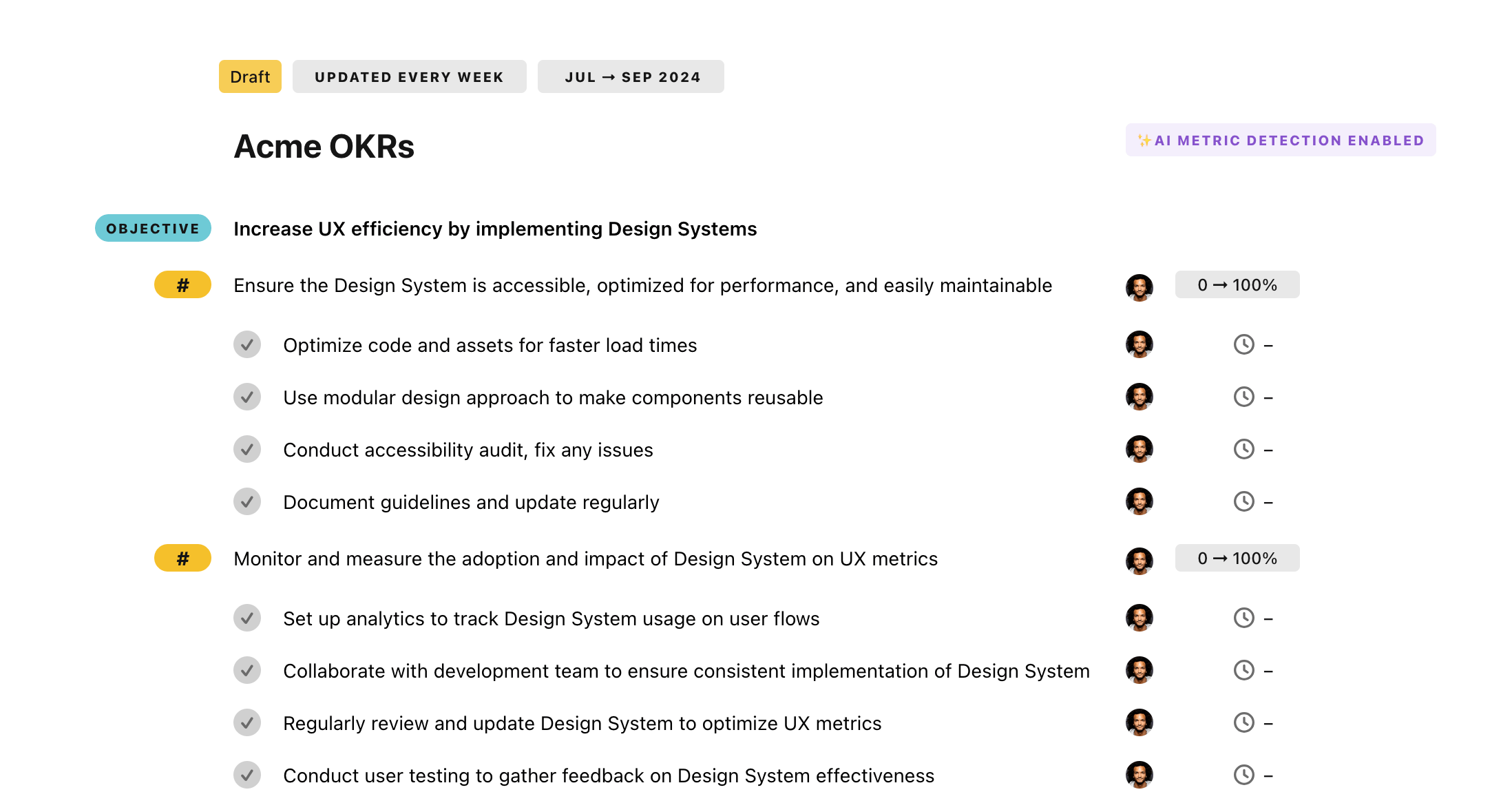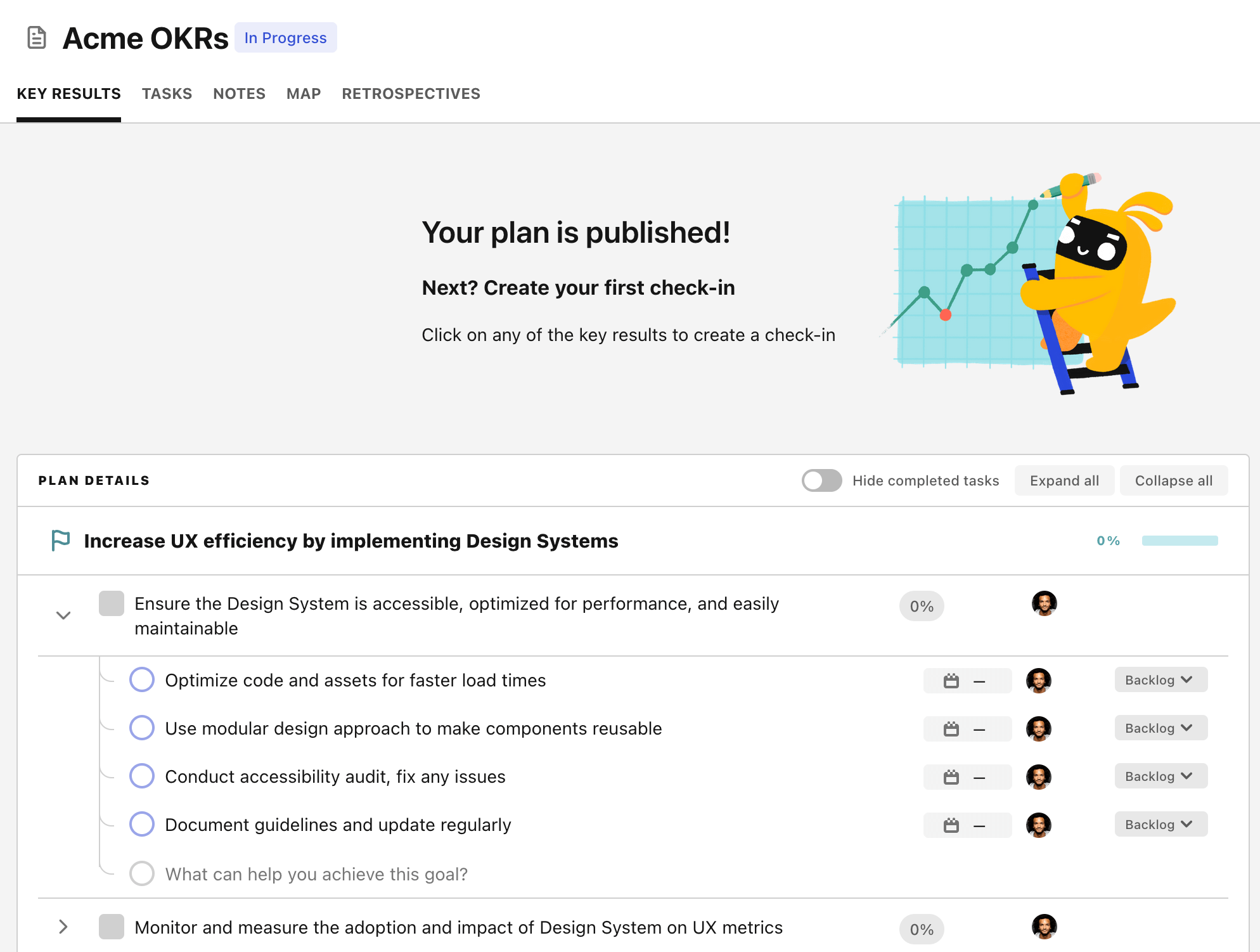OKR template to improve Stakeholder Satisfaction
Your OKR template
The next aim centers on improving the overall customer satisfaction score by 10% through an improved feedback survey approach. Analysis of the feedback survey data will help identify areas of improvement, launch customer-oriented initiatives, create comprehensive feedback surveys, and promote them across all customer channels for increased visibility.
The implementation of at least two new features or enhancements based on stakeholder feedback is aimed to optimize the user experience. Regular testing and validation of these features, conducting interviews and surveys for stakeholder feedback, and collaborating with the development team will ensure effectiveness in this segment.
Lastly, to streamline communication, it aims to cut the average response time to customer inquiries by 20%. This will involve automating emails for customer inquiries acknowledgment, updating the FAQ section regularly, integrating a live chat feature on the company website, and regular training of customer service representatives.
ObjectiveImprove Stakeholder Satisfaction
KRAchieve 90% stakeholder retention rate by addressing and resolving their concerns promptly
Conduct regular stakeholder surveys to identify concerns and areas of improvement
Develop a robust feedback mechanism to ensure swift resolution of stakeholder issues
Provide timely and effective communication to stakeholders regarding the progress of issue resolution
Implement a dedicated stakeholder support team to address concerns promptly
KRIncrease overall customer satisfaction score by 10% through feedback surveys
Analyze feedback survey data to identify areas for improvement and prioritize necessary changes
Implement customer-centric initiatives based on feedback survey insights to enhance overall satisfaction
Develop a comprehensive feedback survey to gather data on customer satisfaction
Increase visibility of feedback surveys by promoting them across all customer touchpoints
KRImplement at least 2 new features/enhancements based on stakeholder feedback to enhance their experience
Test and validate the implemented features/enhancements to ensure they enhance the stakeholder experience
Conduct stakeholder interviews and surveys to gather feedback on current features and identify areas for improvement
Analyze the feedback to prioritize and identify the top 2 features/enhancements for implementation
Collaborate with the development team to design and develop the selected features/enhancements
KRReduce average response time to customer inquiries by 20% through improved communication channels
Set up an automated email system to acknowledge receipt of customer inquiries
Regularly review and update FAQ section to address common customer queries and concerns
Implement a live chat feature on the company's website for immediate customer support
Train customer service representatives in effective communication and problem-solving techniques
How to edit and track OKRs with Tability
You'll probably want to edit the examples in this post, and Tability is the perfect tool for it.
Tability is an AI-powered platform that helps teams set better goals, monitor execution, and get help to achieve their objectives faster.
With Tability you can:
- Use AI to draft a complete set of OKRs in seconds
- Connect your OKRs and team goals to your project
- Automate reporting with integrations and built-in dashboard
Instead of having to copy the content of the OKR examples in a doc or spreadsheet, you can use Tability’s magic importer to start using any of the examples in this page.
The import process can be done in seconds, allowing you to edit OKRs directly in a platform that knows how to manage and track goals.
Step 1. Sign up for a free Tability account
Go tohttps://tability.app/signup and create your account (it's free!)
Step 2. Create a plan
Follow the steps after your onboarding to create your first plan, you should get to a page that looks like the picture below.

Step 3. Use the magic importer
Click on Use magic import to open up the Magic Import modal.
Now, go back to the OKR examples, and click on Copy on the example that you’d like to use.

Paste the content in the text import section. Don’t worry about the formatting, Tability’s AI will be able to parse it!

Now, just click on Import from text and let the magic happen.

Once your example is in the plan editor, you will be able to:
- Edit the objectives, key results, and tasks
- Click on the target 0 → 100% to set better target
- Use the tips and the AI to refine your goals
Step 4. Publish your plan
Once you’re done editing, you can publish your plan to switch to the goal-tracking mode.

From there you will have access to all the features that will help you and your team save hours with OKR reporting.
- 10+ built-in dashboards to visualise progress on your goals
- Weekly reminders, data connectors, and smart notifications
- 9 views to map OKRs to strategic projects
- Strategy map to align teams at scale